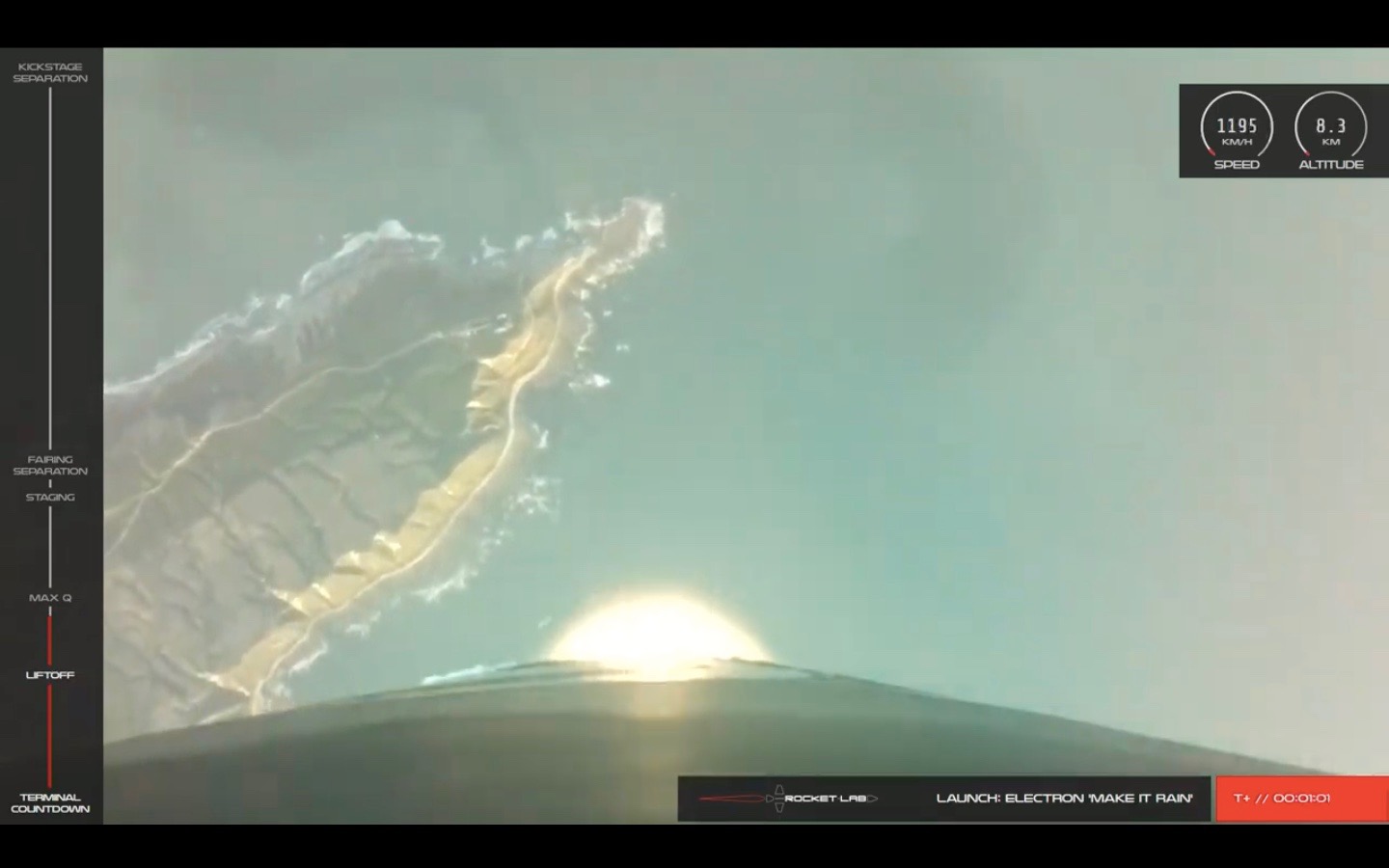Sevens were wild for Rocket Lab early this morning (June 29).
The spaceflight startup launched seven small satellites to low-Earth orbit on the company's seventh flight, a mission dubbed "Make It Rain."
Rocket Lab's two-stage Electron booster rose into the heavens from the company's New Zealand launch site today at 12:30 a.m. EDT (0430 GMT; 4:30 p.m. local New Zealand time). All seven craft were safely deployed by about 56 minutes after liftoff, company representatives said.
Related: Rocket Lab and Its Electron Booster (Photos)
All payloads deployed, perfect flight.June 29, 2019
Those payloads include two craft called Prometheus, which will be operated by the United States Special Operations Command, and the cubesat ACRUX-1. This latter satellite was lofted for the Melbourne Space Program, an educational organization that gives Australian students hands-on experience with space projects.
"The largest spacecraft on the mission is BlackSky Global-3, a microsatellite developed, designed and manufactured by BlackSky, a leading provider of geospatial intelligence, satellite imaging, and global monitoring services," Rocket Lab representatives wrote in the "Make It Rain" press kit, which you can find here.

Rocket Lab aims to greatly increase access to space using Electron, a two-stage booster that's 57 feet tall and 4 feet wide (17 by 1.2 meters). The rocket is capable of lofting a maximum of about 500 lbs. (225 kilograms) on each roughly $5 million liftoff.
Get the Space.com Newsletter
Breaking space news, the latest updates on rocket launches, skywatching events and more!
The total payload mass carried up this morning was 176 lbs. (80 kg), Rocket Lab representatives said.
Electron has now flown a total of seven times, including test flights, and three times in 2019. Rocket Lab plans to ramp up the spaceflight action soon; company CEO Peter Beck has said he'd like to get a dozen Electron missions in this year.
And the cadence will increase significantly in the future, if all goes according to plan. Rocket Lab would eventually like to fly once per week, or perhaps even more frequently than that, Beck has said.
Not all of these launches will occur from the New Zealand site, which sits on the North Island's Mahia Peninsula. Rocket Lab is building a second site at the Mid-Atlantic Regional Spaceport in Virginia, and the company aims to have it ready before the end of 2019.
Rocket Lab gives all of its missions playful names. (The two previous 2019 flights were called "Two Thumbs Up" and "That's a Funny-Looking Cactus.") "Make It Rain" is a reference to Seattle, the famously wet city that serves as the home base of Spaceflight, the rideshare provider that procured the mission.
- Rocket Lab Aims to Win Cubesat-Launching Race
- It's Business Time! Rocket Lab Lofts 6 Satellites on 1st Commercial Launch
- Cubesats: Tiny, Versatile Spacecraft Explained (Infographic)
Editor's note: This story was updated at 2:20 a.m. EDT with news of payload deployment.
Mike Wall's book about the search for alien life, "Out There" (Grand Central Publishing, 2018; illustrated by Karl Tate), is out now. Follow him on Twitter @michaeldwall. Follow us on Twitter @Spacedotcom or Facebook.
Join our Space Forums to keep talking space on the latest missions, night sky and more! And if you have a news tip, correction or comment, let us know at: community@space.com.

Michael Wall is a Senior Space Writer with Space.com and joined the team in 2010. He primarily covers exoplanets, spaceflight and military space, but has been known to dabble in the space art beat. His book about the search for alien life, "Out There," was published on Nov. 13, 2018. Before becoming a science writer, Michael worked as a herpetologist and wildlife biologist. He has a Ph.D. in evolutionary biology from the University of Sydney, Australia, a bachelor's degree from the University of Arizona, and a graduate certificate in science writing from the University of California, Santa Cruz. To find out what his latest project is, you can follow Michael on Twitter.









